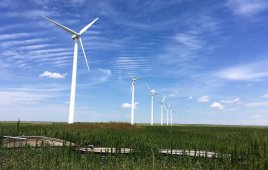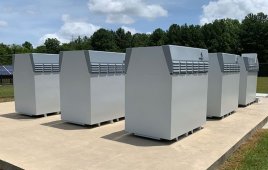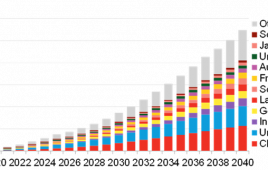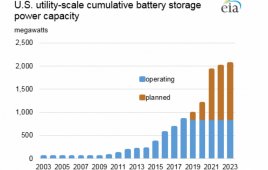Editor’s note: This is the abstract and intro to a paper, A study on using large scale energy storage systems in automatic generation control operations of the energy management system.
Authors: Im Jihoon, Lim Gunpyo, Park Chanwook, Choi Yohan, Kim Seunghan, Chang Byunghoon
Journal title : KEPCO Journal on Electric Power and Energy
Publisher : Korea Electric Power Corporation
Abstract
KEPCO has completed the installation and demonstration of a 52-MW battery energy storage system (BESS) for frequency regulation. The 24 MW BESS is for Automatic Generation Control (AGC) in Shin-Yongin substation. Recently, KEPCO Research Institute operated it connected to EMS of KPX. This paper discusses the operation strategy of EMS through a study on using 24 MW BESS in AGC operation and proposes the improvement of AGC target. It is expected that this paper helps define a safe and reliable operation and control of ESS for AGC through its continuous update.
Intro
As an energy storage technology is developed, an application of the energy storage system (ESS) has been regarded as a core technology in power systems. Especially, battery energy storage system (BESS) using a large-scale battery is under the demonstrating stage over the developing stage. Among the many applications of BESS, one of the important functions is the frequency regulation service (FR) [1].
The technical and economic benefits of using energy storage for FR are already being proven in the U.S., particularly in the PJM Interconnection, where regulatory policies and markets for energy storage are already in place [2]-[4].
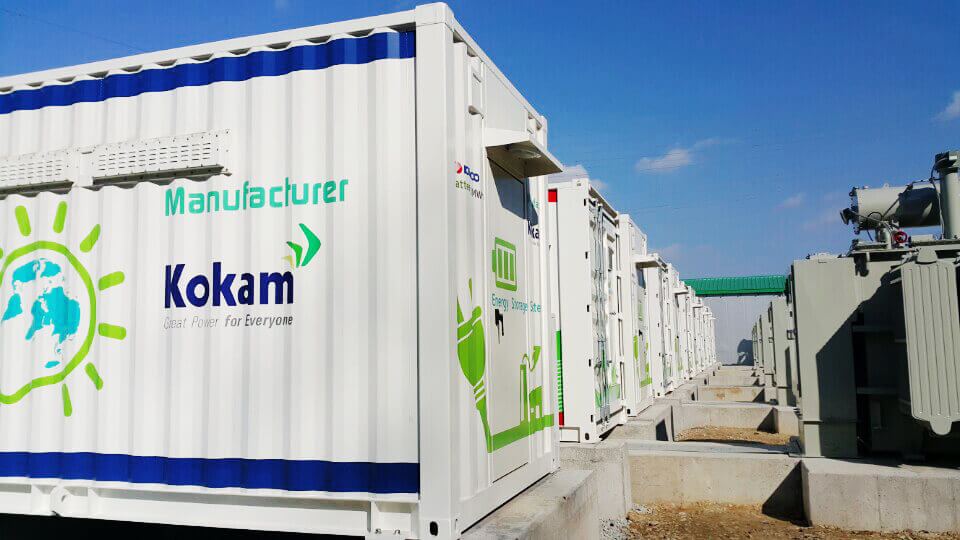
Korea Electric reports on the effectiveness of a 52-MW battery, like this one, for frequency regulation of the national grid.
has been determined to provide better frequency regulation services to the power grid. KEPCO has demonstrated for commercial operation using 52 MW FR-ESS and has been installing additional 200 MW FR-ESS [5].
Maintaining the frequency of a power system within an acceptable range and responding to sudden frequency drops are traditionally done by deploying thermal power plants to correct frequency deviations. In Korea, frequency regulation is performed by “governor-free” (GF) control, wherein turbine governors are to respond within 10 seconds and provide power for 30 seconds; and through automatic generation control (AGC), wherein a power plant must respond within 30 seconds and provide power for 30 minutes. These methods, however, are inefficient in that they require power plants to operate below their rated capacity to remain on standby until they are needed [6].
The GF algorithm for BESS has been developed and modified many times. The GF algorithm of BESS has proved its excellence in power systems. But, the AGC operation for BESS has not been considered yet [5][7][8].
This paper presents the development and trial run results of the AGC operation for BESS with energy management system (EMS) reference of Korea Power Exchange (KPX). AGC operation performance with BESS is better than that of conventional power plants in terms of fast response. But AGC operation with BESS has the concern about duration time for AGC operation. So, this paper shows the trial results of the AGC operation with variable conditions and analyzes the results in terms of SOC with AGC reference of KPX.
For the full article: https://goo.gl/j36y5l
Filed Under: Energy storage

